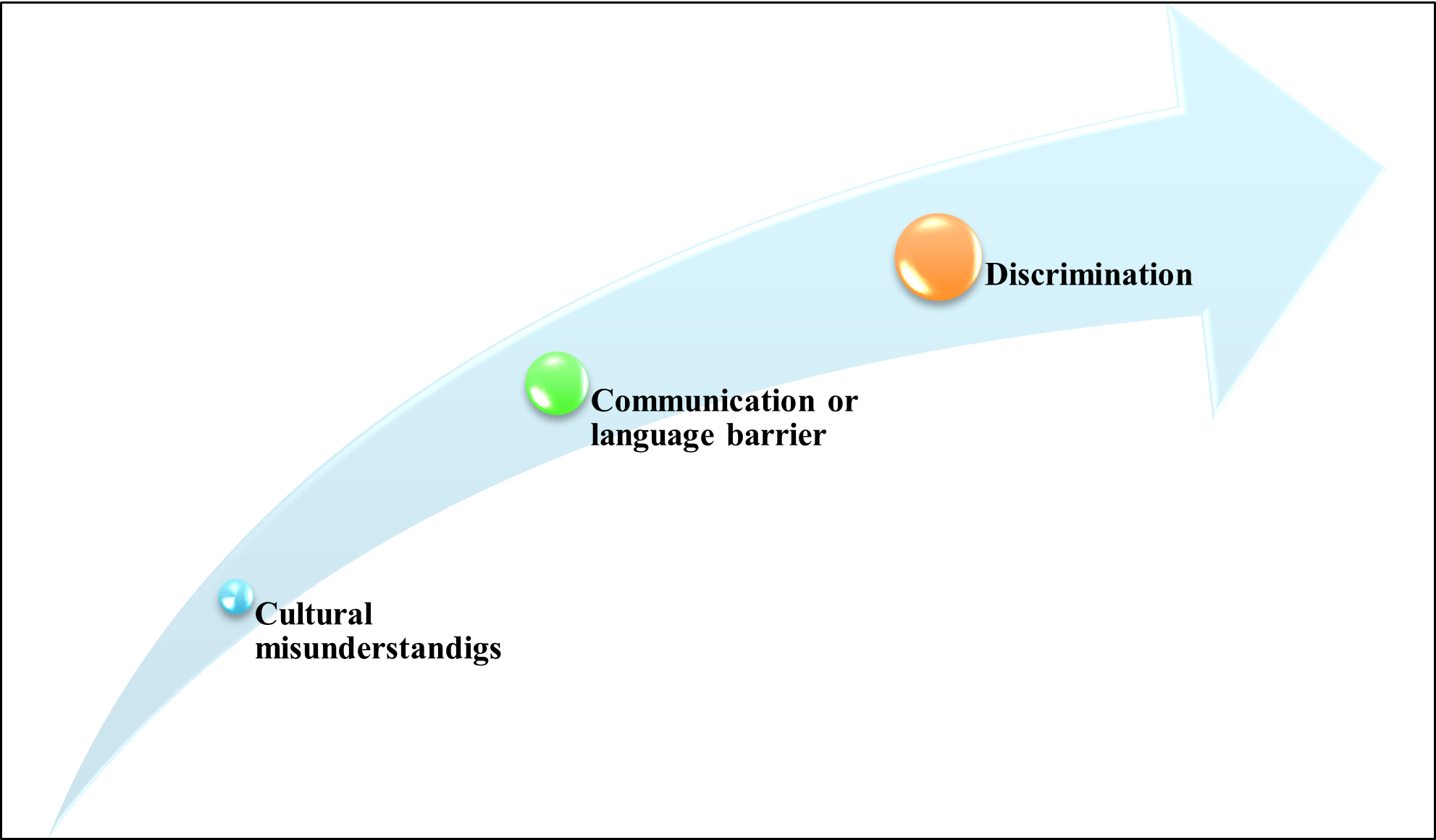Impact Of Interpersonal Communication Within Workplace Diversity
Question
Task:
This Course Project will allow you to provide meaningful examples of your learning and progress.
- Discuss the main interpersonal communication theories and their implications.
- Evaluate the changing components of communication and assess the causes and components of communication problems.
- Identify methods of communication, everyday interactions, and distinguish the correlation between communication and perception.
- Identify the significant revolutions and events that have shaped our methods of communication and evaluate the current trends and workplace diversities that impact interpersonal communication.
Answer
Introduction
Interpersonal communication skills can be demonstrated as the effective skills required for interacting, communicating, and working within groups. Starting from active listening to forming a better team and managing the team effectively all the processes come under interpersonal skills. However, active listening, responsibility, dependability, transparency, verbal well as non-verbal communication all are related to this field. This paper is going to shed light upon the perspective, challenges, social issues, and the theoretical context related to diversity and communication as an effective interpersonal communication attribute.
The perspective of diversity and communication in daily life
In the era of globalization diversity is one of the main considerations for any of the continents to make an efficient as well as effective workplace culture. A diverse workplace creates a thousand doors of opportunities along with challenges that can be minimized or faced by communication attributes (Trepte & Loths, 2020). Creating cross-cultural communication skills within a diverse workplace is important or vice versa. In order to make efficient growth within the workplace, clear and effective communication between the employees with different essential backgrounds along with the managers is the main component that can reflect the transparency and communication structure within the organizational body. Bui et al. (2019) once articulated creating a diverse culture within the society as well as in anybody not only encompasses the growth of the community but also creates a history that can be remembered by future generations by creating a sense of trust and truthfulness.
Social issues and challenges related to diversity
Creating a diverse culture within the community is not as easy as it looks. In order to create a diverse workplace challenge in the form of communication issues, discrimination, and mistrust, and misunderstanding, transparency can occur. The issues that have been a major consideration for this decade to create a diverse community are discussed below-
Communication problems: Communication problems are the most common and one of the biggest challenges faced by any community or organization in order to create a diverse culture within the workplace. It has been found that most of the employees from different cultural backgrounds shrink themselves within a limit and refuse to communicate that may be verbal or non-verbal with others due to fear and hesitation that reduces the efficiency in the workplace. It can also be demonstrated as the language barrier (Kumove, 2020). It has been found that organizations with diverse work cultures have been carrying employees from different continents so language difference is a basic part of that.
Cultural misunderstandings: The era of globalization increases the importance of deploying employees from different continents and also increases the chance of creating an adverse workplace. MacDonald (2019) has articulated that cultural misunderstanding and misbelief is the reason behind any organizational conflict. It has been found that employees with a strong cultural background often reduce interaction with others and often end up creating organizational conflicts.
Discrimination: One of the major and most considered factors is workplace discrimination. Building a cross-cultural diverse workplace increases the chances of discrimination that may create a sense of mistrust within the organization. Labib & Evans (2021) have said that approximately one-third of the employees from different cultural backgrounds, different gender, and age have faced this trouble while working with an organization with different cultural backgrounds. However, it has also been found that the organization neglected to go beyond its limit, and its negligence to adopt the modern culture often ended up with huge employee turnover and witnessed a tremendous downfall in organizational productivity and growth.

Figure 1: Issues and challenges related to diversity
(Source: Influenced by Labib & Evans 2021)
Steps for better interpersonal communication skills
Ending up with creating conflicts, huge employee turnover, reducing the transparency and openness in the organizational background cannot be the solution to make the communication procedure effective. The phrase "If there is a will, there is a way" reflects that if the background of the organization and community is motivated enough to handle the social issues effectively there always are some ways that can be incorporated to overcome this situation (Bui et al. 2019). The effective skills for better interpersonal communication skills are described below-
Open transparency: Transparency means sharing ideas and visions, missions, and organizational goals with every employee out there within the organization to make a sense of trust and achieve organizational goals within a specific period (Tariq, 2022). It has been found that if the managers and the leaders make an interactive atmosphere within the work culture it becomes easier for the employees to come up with new thoughts and ideas and increase the growth of the organization.
Training and development programs: Different training and development procedures in the form of sensitivity training, workshop mentor programs can be organized by the organizations to build interpersonal communication skills and overcome cross-cultural challenges.
Organize cross-cultural activities: The problems related to diverse cultural work can be minimized by organizing cross-cultural activities and programs within the organization. It has been found that the employees with strong cultural beliefs melt easily in front of the appreciation of this particular culture and trust among the employees can also be easily enhanced (Tariq, 2022). Thus in order to develop better interpersonal communication skills, cultural activities plays a crucial role.

Figure 2: Steps to overcome the diversity
(Source: Influenced by Tariq, 2022)
The implication of social exchange theory for better interpersonal communication
The social exchange theory emphasizes the reward and action received by the people based on the decisions that have been made by them. Social interaction becomes a major part of this theory that can be considered as the cost or reward of the decisions (Chernyak-Hai & Rabenu, 2018). This theory makes an individual more interactive and prominent as it grows the self-confidence within the individual and influences to open up with different topics and can increase the employee engagement and sense of trust. On the other hand, the interaction may provide rewards in the form of recognition that may reduce the cultural barrier and build trust.
Conclusion
This study has shed light upon the interpersonal communication skills on a specific topic diversity and communication. The impact and challenges of diversity in communication along with the effective interactive skills in the workplace and society have also been articulated along with the theoretical context.
Reference list
Bui, H., Chau, V. S., Degl'Innocenti, M., Leone, L., & Vicentini, F. (2019). The resilient organisation: A meta?analysis of the effect of communication on team diversity and team performance. Applied Psychology, 68(4), 621-657. Retrieved on 5th January from https://iaap-journals.onlinelibrary.wiley.com/doi/abs/10.1111/apps.12203
Chernyak-Hai, L., & Rabenu, E. (2018). The new era workplace relationships: Is social exchange theory still relevant?. Industrial and Organizational Psychology, 11(3), 456-481. Retrieved on 5th January From https://www.cambridge.org/core/journals/industrial-and-organizational-psychology/article/new-era-workplace-relationships-is-social-exchange-theory-still-relevant/F4E7EA06887C7CD12A3BF6F038D88CE6
Kumove, M. (2020). Diversity, semi-communication and cross-country trust: A quantitative analysis. Social science research, 86, 102392. Retrieved on 5th January from https://www.sciencedirect.com/science/article/pii/S0049089X19303473
Labib, K., & Evans, N. (2021). Gender, diversity, and the responsible assessment of researchers. PLoS Biology, 19(4), e3001036. Retrieved on 5th January from https://journals.plos.org/plosbiology/article?id=10.1371/journal.pbio.3001036
MacDonald, K. M. (2019). Taking on the Challenges of Diversity and Visibility: Thoughts from a Small Honors Program. Journal of the National Collegiate Honors Council, 20(1), 19-24. Retrieved on 5th January from https://eric.ed.gov/?id=EJ1220581
Tariq. (2022). Council Post: Why And How To Improve Diversity In The Workplace. Retrieved on 5 th January 2022, from https://www.forbes.com/sites/forbescommunicationscouncil/2021/09/23/why-and-how-to-improve-diversity-in-the-workplace/?sh=89cb1d7139ed
Trepte, S., & Loths, L. (2020). National and gender diversity in communication: A content analysis of six journals between 2006 and 2016. Annals of the International Communication Association, 44(4), 289-311. Retrieved on 5th January from https://www.tandfonline.com/doi/abs/10.1080/23808985.2020.1804434












